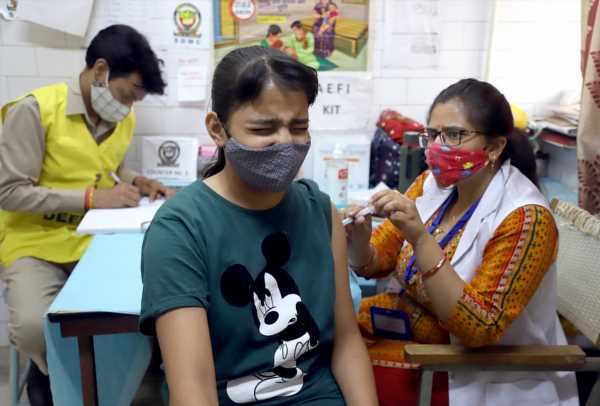Delhi’s R-value, which indicates the spread of COVID-19, was recorded at 2.1 this week, implying that every infected person is infecting two others in the national capital, according to an analysis by IIT-Madras.
The ‘R’ or reproductive value indicates the number of people an infected person can spread the disease to, and a pandemic is considered to end if this value goes below one.
The preliminary analysis by computational modelling was done by IIT-Madras’ department of mathematics and centre of excellence for computational mathematics and data science headed by Prof Neelesh S Upadhye and Prof S Sundar.
This was shared with PTI and according to it, Delhi’s R-value this week was recorded at 2.1.
India’s R-value, at present, stands at 1.3, the analysis found.
Asked if it can be deduced that this is the beginning of the fourth wave of COVID-19 in Delhi, Dr Jayant Jha, assistant professor, department of mathematics, IIT-Madras, said it would be too early to declare an onset of another wave.
“We can only say right now that every person is affecting two others….but we need to wait a bit to declare onset…we don’t know about the immunity status and whether the people who got affected during the third wave in January are getting affected or not again,” he told PTI.
For other metro cities — Mumbai, Chennai and Kolkata, Jha said the number of cases are too low to ascertain a trend.
Delhi is witnessing an uptick in the number of COVID-19 cases. The city logged 1,042 fresh Covid cases with a positivity rate of 4.64 per cent on Friday.
The Omicron sub-lineage BA.2.12 has been detected in a majority of the samples sequenced from Delhi in the first fortnight of April and it could be behind the recent surge in COVID-19 cases in the city, sources said on Thursday.
However, an Indian SARS-CoV-2 Genomics Consortium source has claimed that Omicron variant derivative BA.2.12.1 has also been found in a few samples in Delhi which is said to be contributing to the recent rise in cases in the US.
But officials have not confirmed that it indeed was found in some samples in Delhi.
An official source said, “New sub-variants BA.2.12 (52 per cent samples) and BA.2.10 (11 per cent samples) are showing high transmission and have been found in over 60 per cent of the total samples from Delhi sequenced recently.”
Source: Read Full Article

